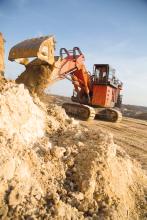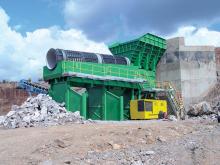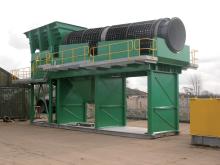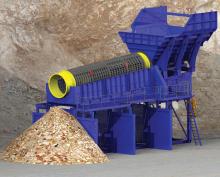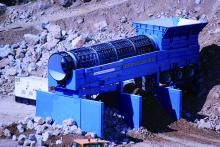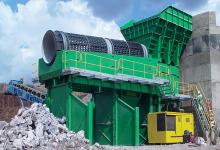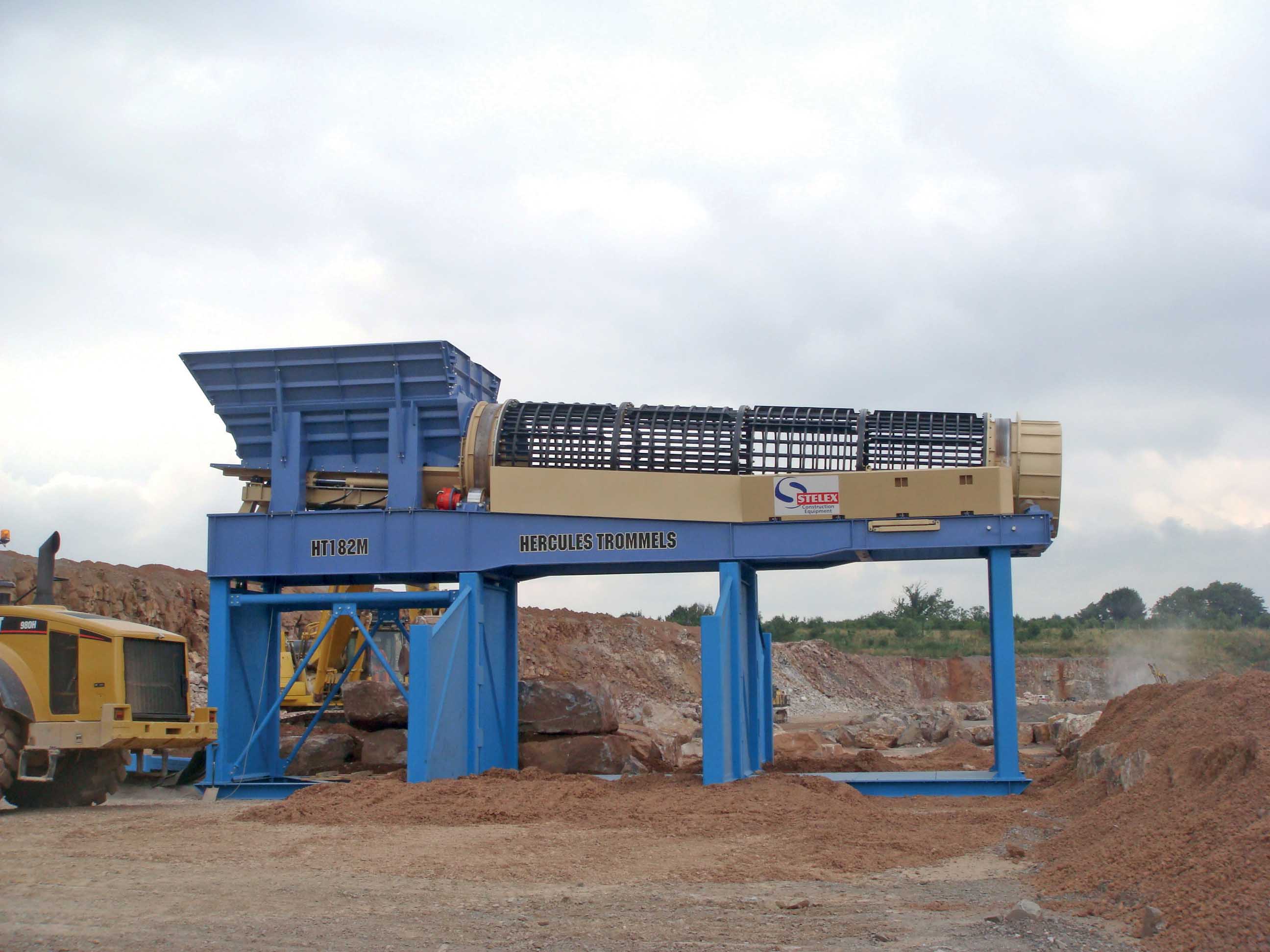
An extended trommel trial at a major UK quarrying company site in South-west England is said to have tackled a major problem with overburden, as Guy Woodford reports.
A leading UK quarrying company has used a Hercules HT182M mobile trommel from
During the Hercules HT182M trial, the large quantity of material entering the tip area was recorded over a three-year period. From the recovery rates that were achieved it was found that 800,000tonnes of waste could be reprocessed with the trommel in just 20 months. This reprocessing has reduced the size of the waste pile while also creating a saleable material for the quarry operator.
The feed material in the quarry is notoriously sticky in wet conditions and during the prolonged trial the weather was particularly bad with long periods of heavy rain. The versatility of the Hercules trommel controls are said to have allowed the barrel rotation speed and reciprocating feeder rate to match the feed material and weather conditions to maximise the screening efficiency and throughput. The trommel’s barrel apertures were selected to suit the customer’s project needs, and were also suitable to cope with the demanding feed material. A gabion-sized barrel section was also introduced to add a new product for the customer to generate extra sales revenue.
A survey was made of the quantity of existing overburden, large waste piles and wash plant fines and a plan was made for the reduction of these for years to come while also processing material at the existing quarry face. During the lengthy trial a wide variety of materials were used from the existing quarry face and differing depths of the old waste pile. Combinations of these materials were processed to achieve a range of recovery rates in different weather conditions.
The supplied trommel is a heavy-duty version using a 1.8m diameter x 8m long barrel. This barrel was divided into sections to provide a fines-recovery/clean-up section and, additionally, there was an added sizing section for the new gabion product which was said to be an unexpected bonus for the customer.
The trommel was fed by an existing excavator that was already on site at a rate of up to 500 tonnes/hour. The rejected material and clean stone were removed from under the trommel using loading shovels. The oversize material off the end of the trommel was dropped over the existing bench and allowed to build up until removed by loading shovel when required.
During the demonstration an accurate record was made of the daily weather conditions, where the feed material was located within the waste pile, the throughput of the trommel, and the recovery percentage achieved. Calculations were also made on the costs for blasting, royalties, loading and hauling, and fuel costs.
Stelex said it was quickly apparent that a significant saving could be made in many areas with the Hercules HT182M trommel. These could be found in reduced fuel costs for mobile plant; lower haulage costs with less mobile plant movements leading to less mobile plant being required on site; planned quarry extensions suspended giving extended life to the quarry; and less pressure on other crushing/screening plant within the quarry as the stone reaching the plant is not contaminated. This is said to have led to improved reliability. Stelex said the maximum recovery rate of 81% was achieved, with an average of 54% achieved over the whole extended trial. Finally, new products produced by the trommel have generated extra sales revenue.
Various locations were used within the vast waste pile to select the feed material for the three-year trial. Some of these locations had seen the feed material sitting in that same place for many years, which made the contamination very compact, especially lower down where finer material has washed through. Even with the heavy rain during the demonstration, the trommel is said to have coped well with the difficult feed material and excellent recovery rates of over 60% were recorded. This recovery would have been almost impossible, said Stelex, by any other current method.
The amount of unwanted waste material returning to the waste pile after passing through the trommel was greatly reduced, and further working of the waste pile would result in more quality stone being recovered and more room on the quarry floor, as the waste pile is reduced. At the time of the trial’s conclusion, it meant that the existing waste pile could be worked on for many months to come and, consequently, possible planned quarry extensions may be put on hold, resulting in further cost savings from expensive planning applications.
At the UK Hercules HT182M trial quarry, the clean gabion was removed from under the trommel and made available for immediate sale as a new product. The clean oversize material off the end of the trommel is now being sent to the primary crusher without the additional problem caused by the contamination. This will help to prevent future breakdowns and allow the rest of the plant to be much more efficient and reliable.
The purchase cost of the trommel was broken down into a cost per tonne and factored in the costs for royalties, blasting, processing and fuel to give a monthly value to the quarry operator. This value used the recovery rates of the trommel during the test period.
A plan was made at this stage to position the trommel in a safe area to provide ideal access from all areas of the quarry.
Due to the increasing requirement to reclaim and recycle a larger amount of primary rock, and the need to clean materials containing heavy contamination are likely to ensure that heavy duty trommels will continue to offer major savings and production efficiency solutions in the coming years.

